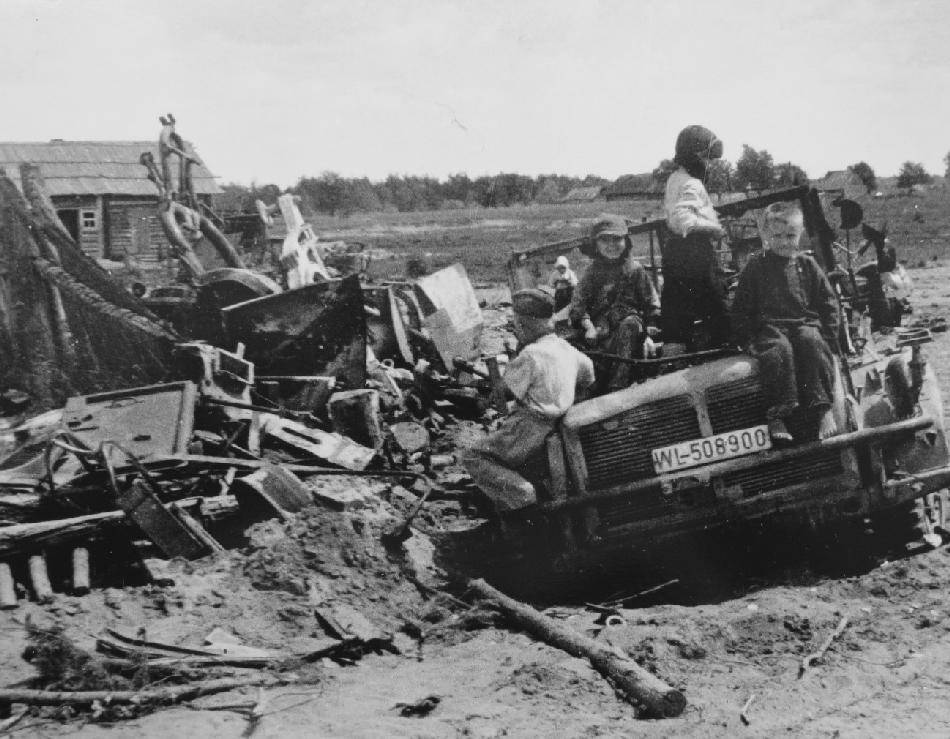
The Air War in the East: Destruction of the Luftwaffe (1943-44)

Figure 1.--Here Russian children have converted a wrecked Luftwaffe truck into a playgroud somewhere in the East. These were the children targeted for death, deportation, and slavery in the SS Generalplan Ost. As the SS destroyed copies of the Plan and German armies retreated west, the Luftwaffe was unable to provide air cover. Just as the Allied strategic boming campaign was increasing pressure from the West a reconstitured Red Air Force in the East was beginning to hammer German positions and columns. Luftwaffe planes could deploy reltively easily, Luftwaffe ground crews and equipmnt were a different matter.
|
|
The Luftwaffe even at the peak of its strength in 1941 was not able to provide the advancing German columns the same level of air support it provided in the smeller battlefields of Western Europe. The destruction of the Red Air Force meant that the Germans did not face air attacks, but they had much less air support. This began to change in late-1942. While the Luftwaffe essentially leveled Stalingrad (September 1942), but by the end of the year the reconstituted Red Air Force was interdicting Luftwaffe planes attempting to supply the shrinking Stalingrad pocket. The Allied strategic bombing campaign not only forced the Luftwaffe to withdraw assets from the Eastern Front to defend German cities. In addition the bombing disrupted German production. Speer's reforms maintained production, but the strategic bombing campaign prevented increases. Luftwaffe losses were limited in 1943, but the expanding strategic bombing campaign drained resources from the East. Many accounts of the air war do not give sufficient
attention to the impact on the Luftwaffe of engaging the Allied bombers even before long-range fighter cover became available. The arrival of U.S. Army Air Corps P-51 Mustangs led essentially to the destruction of the Luftwaffe (early-1944). The American flyers
not only shot down large numbers of German planes, but most of the remaining experienced German fighter pilots. From this time on, the Wehrmacht in the East had virtually no air cover at the time the Red Air Force was becoming a formidable force. As a result, by the time of Bagration (June-August 1944), not only did the Luftwaffe not have even limited air cover, but the Red Air Force had achieved air superiority.
HBC

Navigate the Boys' Historical Clothing Web Site:
[Return to Main air war in the East page]
[Return to Main Barbarossa page]
[Return to Main Great Patriotic War page]
[Return to Main World War II country page]
[Biographies]
[Campaigns]
[Children]
[Countries]
[Deciding factors]
[Diplomacy]
[Geo-political crisis]
[Economics]
[Home front]
[Intelligence]
[POWs]
[Resistance]
[Race]
[Refugees]
[Technology]
[Bibliographies]
[Contributions]
[FAQs]
[Images]
[Links]
[Registration]
[Tools]
[Return to Main World War II page]
[Return to Main war essay page]
Created: 9:58 AM 2/16/2013
Spell checked: 7:51 PM 2/16/2013
Last updated: 7:51 PM 2/16/2013



